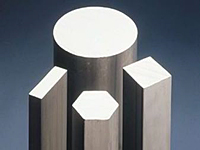| Items |

6061-T6RE-250-8000
Aluminum Rectangles - Series 6061
|

6061-T6RE-250-10000
Aluminum Rectangles - Series 6061
|

6061-T6RE-250-12000
Aluminum Rectangles - Series 6061
|

6061-T6RE-375-8000
Aluminum Rectangles - Series 6061
|

6061-T6RE-375-10000
Aluminum Rectangles - Series 6061
|
|
Material
|
N/A
Aluminum
|
|
Shapeform
|
N/A
Rectangles
|
|
Series
|
N/A
6061-T6
|
|
Grade
|
N/A
6061
|
|
Temper
|
N/A
T6
|
|
Size
|
N/A
1/4 x 8 inches
|
N/A
1/4 x 10 inches
|
N/A
1/4 x 12 inches
|
N/A
3/8 x 8 inches
|
N/A
3/8 x 10 inches
|
|
Working Decimal Equivalent
|
N/A
0.250 x 8.000 inches6.35 x 203.2 mm
|
N/A
0.250 x 10.00 inches6.35 x 254 mm
|
N/A
0.250 x 12.00 inches6.35 x 304.8 mm
|
N/A
0.375 x 8.000 inches9.525 x 203.2 mm
|
N/A
0.375 x 10.000 inches9.525 x 254 mm
|
|
Width
|
N/A
1/4 inches
|
N/A
1/4 inches
|
N/A
1/4 inches
|
N/A
3/8 inches
|
N/A
3/8 inches
|
|
Length
|
N/A
8 inches
|
N/A
10 inches
|
N/A
12 inches
|
N/A
8 inches
|
N/A
10 inches
|
|
Estimated Weight
|
N/A
2.3520 lbs/ft3.500161728 kg/m
|
N/A
2.940 lbs/ft4.37520216 kg/m
|
N/A
3.5280 lbs/ft5.250242592 kg/m
|
N/A
3.5280 lbs/ft5.250242592 kg/m
|
N/A
4.4100 lbs/ft6.56280324 kg/m
|
|
Estimated Weight per 12' Bar
|
N/A
28.224 lbs12.8021918976 kg
|
N/A
35.280 lbs16.002739872 kg
|
N/A
42.336 lbs19.2032878464 kg
|
N/A
42.336 lbs19.2032878464 kg
|
N/A
52.920 lbs24.004109808 kg
|
|
ASTM Specification
|
N/A
AMS 4173 ASTM B221
|
|
Stock Length
|
N/A
12 ft
|
|
Ultimate Strength
|
N/A
45 ksi
|
|
Yield Strength
|
N/A
40 ksi
|
|
Elongation percent in 2 inches
|
N/A
12
|
|
Hardness Brinnel Number
|
N/A
95
|
|
Ultimate Shearing Strength
|
N/A
30 ksi
|
|
Fatigue Endurance Limit1
|
N/A
14 ksi
|
|
Modulus of Elasticity2
|
N/A
10.0 x 104 ksi
|
|
Resistance to Corrosion - General3
|
N/A
B
|
|
Stress Corrosion Cracking4
|
N/A
A
|
|
Workability (Cold)5
|
N/A
C
|
|
Mechinability
|
N/A
C
|
|
Brazeability6
|
N/A
A
|
|
Gas Weldability7
|
N/A
A
|
|
Arc Weldability8
|
N/A
A
|
|
Resistance Spot and Seam Weldability9
|
N/A
A
|
|
Applications
|
N/A
Heavy-duty structures requiring good corrosion resistance, truck and marine, railroad cars, furniture, pipelines
|
|
Density
|
N/A
0.098 lbs/in³
|
|
Specific Gravity
|
N/A
2.70
|


